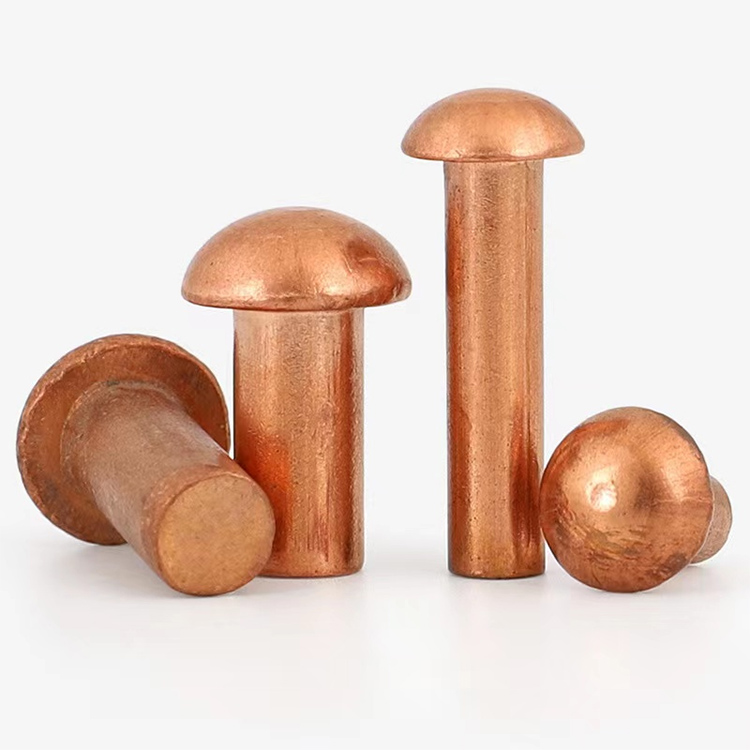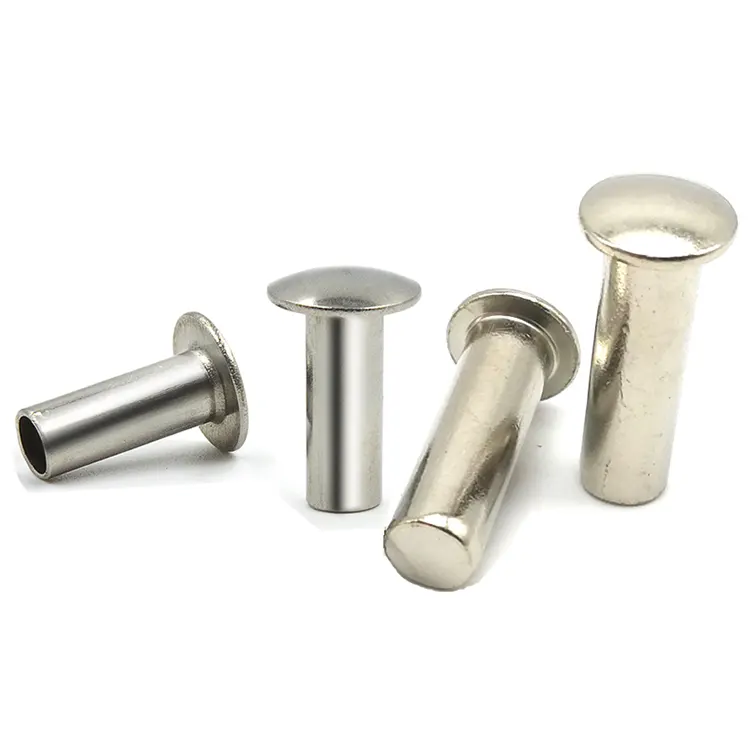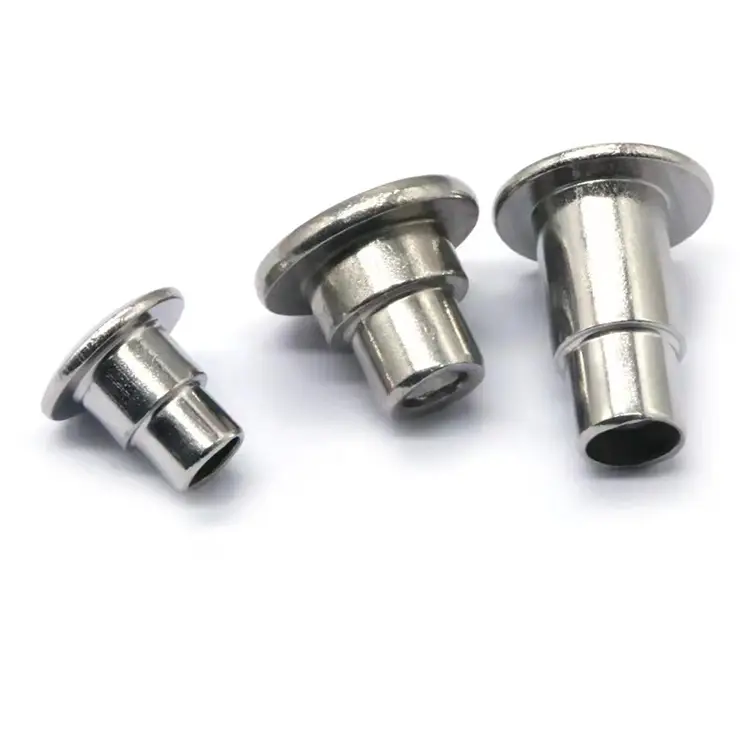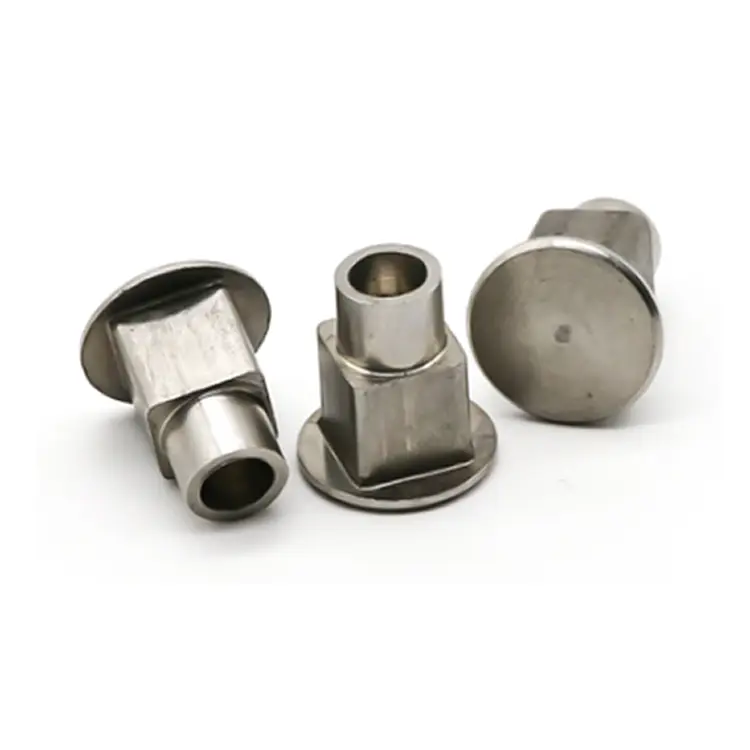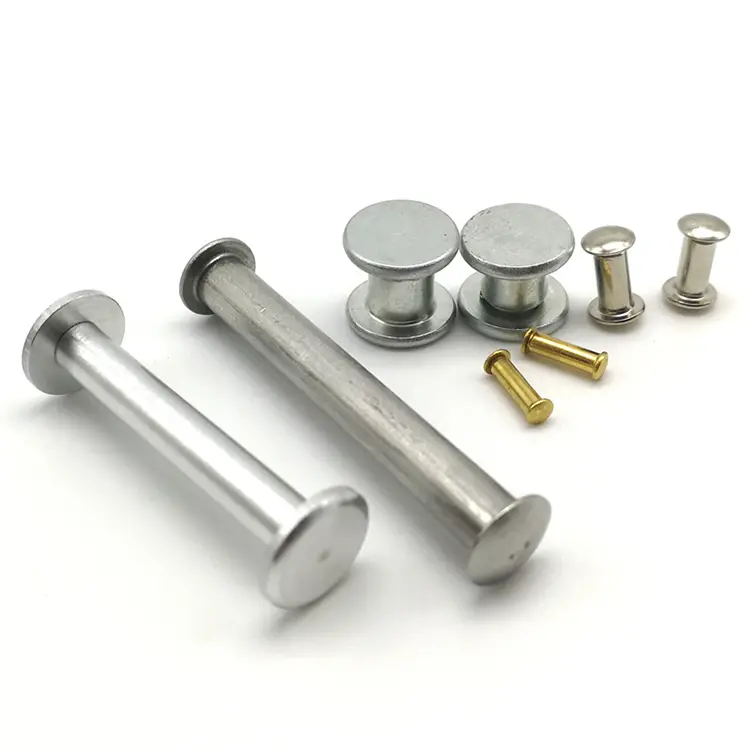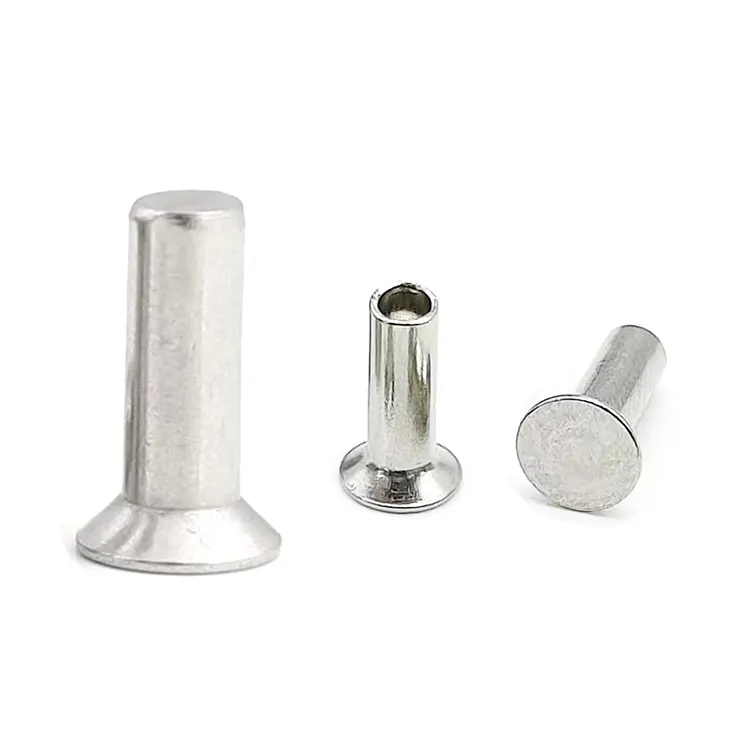Steel Rivets
Send Inquiry
Introduction of carbon steel rivets
The manufacturing process of carbon steel rivets involves multiple steps to ensure their quality and performance. Low-carbon or medium-carbon steel is typically used as raw material due to their balanced strength and toughness. The manufacturing process includes:
-Material Preparation: Carbon steel bar or wire is cut into appropriate lengths to form the rivet blank.
-Cold Heading or Hot Heading: The blank is formed into the rivet shape, including the head, through cold heading (at room temperature) or hot heading (while heated). Cold heading is suitable for smaller rivets to improve surface finish and precision, while hot heading is used for larger rivets to reduce material stress.
-Heat Treatment: Rivets may undergo heat treatments such as quenching and tempering to increase their hardness and tensile strength, preventing deformation or breakage during use.
-Surface Treatment: To prevent rust and improve appearance, rivets are often galvanized, phosphated, or oiled. These treatments extend the service life of the rivet, especially in humid or corrosive environments.
Solid steel rivets
Semi-tubular steel rivets
Full tubular steel rivets
Product Parameter (Specification)
Product Feature And Application
Carbon steel rivets are used across numerous industries due to their reliability and affordability. Here are some common applications:
-Construction and Bridges: In steel structures, rivets are used to connect beams, columns, and frames, providing strong shear and tensile resistance. They can still be seen on some historic bridges, and although bolts are more common today, rivets remain valuable in restoration or specialized design applications.
-Automobiles and Transportation: In automotive manufacturing, rivets are used to secure chassis, body panels, and interior components. They withstand vibration and shock, ensuring safety.
-Home and Furniture: For example, in metal furniture, doors, windows, and hardware, rivets provide secure connections that prevent loosening.
-Machinery and Equipment: In industrial machinery, agricultural equipment, and electronics, rivets are used to assemble components, especially where space is limited or specialized fastening is required.
These applications demonstrate the versatility of carbon steel rivets, but they are not suitable for all situations. For example, where frequent disassembly or extreme corrosion resistance is required, other materials such as stainless steel rivets or aluminum rivets may be required.
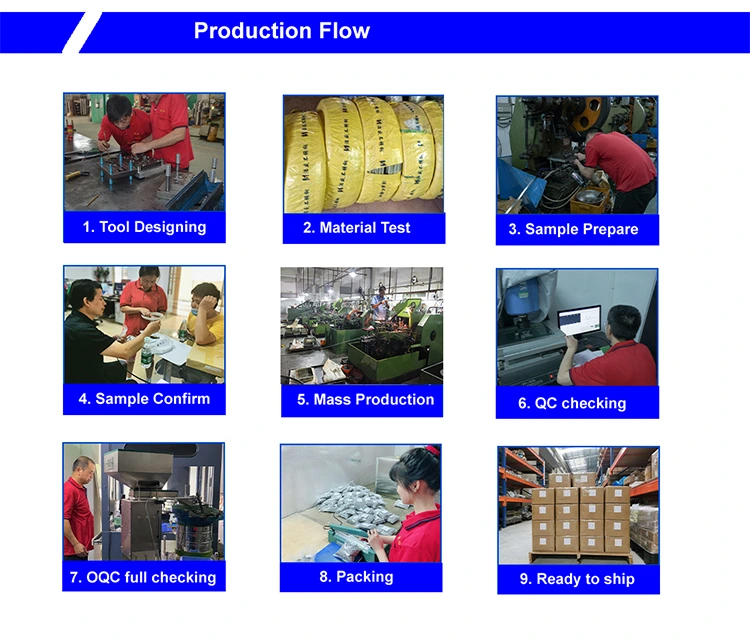
Packing information

FAQ:
Q1: What is your MOQ for steel rivets?
MOQ for rivets is 20,000pcs.
Q2: What is your main product?
Noute Metal produce metal eyelets, cold forming rivets, CNC machining parts and stamping parts.
Q3: Could you provide free samples?
We can provide free samples for the size we have in stock, But the clients will pay the Express charges.
Q4: What’s your Delivery Time?
Size of Rivets in stock: 3-5days,Non-standard Rivets: 15-25days. We will make the delivery as soon as possible with the guarantee quality.
Q5: The quality of your products?
The company has advanced production and testing equipment.Every products will be 100% inspected by our QC department before shipment.
Q6: How about your price?
High quality products with reasonable price.
Q7: How should I order and make payment?
By T/T, Sample charges or tool fee before samples; for production, 30%-50% before production, and balance before shipment.
Q8: Why do we choose Nuote Technology ?
1.We Nuote respect the customer terms to protect customer privacy projects.
2.High quality with attractive price
3.Fast Lead time
4.Happy deal and honesty to customer and partner
5.Professional sales ad reply your inquiry with 8 hours.
6.Nuote's products and service are sold to more than 70 countries with good reputtion




